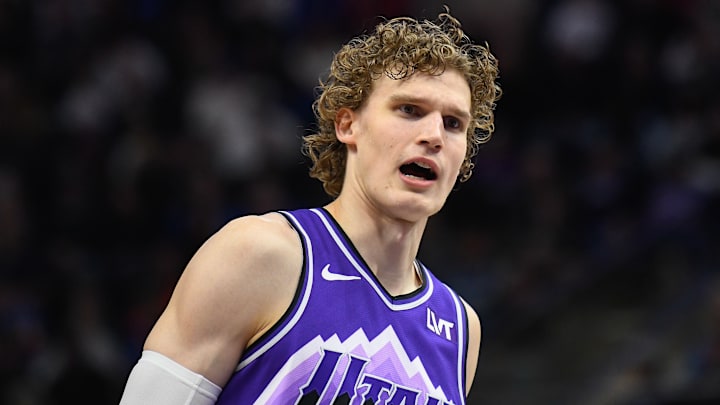This offseason will mark the second anniversary of the Rudy Gobert and Donovan Mitchell trades, which sent the Utah Jazz into a new rebuild. While it is difficult to fully evaluate the value of those trades until all the draft picks have been selected and developed, it is possible to assess the steps the Jazz have taken and what the future steps could look like.
Is the core established?
The Jazz's four highest-paid players represent their current core. John Collins, Jordan Clarkson, Collin Sexton, and Lauri Markkanen give the Jazz a solid core of players to build around, should they choose to keep all of them. All are signed through the end of next season, although Lauri Markkanen's contract will expire at the end of the season.
While the depth behind this core isn't much to speak of, this core led by Markkanen, if surrounded by the right pieces, could turn the Jazz into a playoff contender. Markkanen is the Jazz's best player right now, so extending and building around him may be the best path forward if the two parties are on the same page. He averaged 23.2 points, 8.2 rebounds, and 2 assists while also grabbing nearly 1 steal per game.
Sexton, Clarkson, and Collins are all more interesting situations, as they are set to make 18.1 million, 14 million, and 26.5 million respectively next year. While the Jazz are expected to have more than 35 million in cap space going into free agency, these salaries may be too high for what Danny Ainge hopes to build.
This core may very easily all be back next season to build on their previous year, but on the flip side, one or more could be used in a trade to upgrade a position of need since the Jazz do have some spending money this offseason.
Time to hit the draft
While the Jazz did use a pick from the Gobert trade this past draft to select Taylor Hendricks out of UCF, most of the picks they acquired only begin to return dividends over the next few years. This year, the Jazz own the rights to the No. 10 and No. 29 overall picks and have many future first-round picks as well. If the Jazz identify their guy in the draft, they have the assets to go get him. They also have multiple options to choose from.
The Jazz also have the opportunity to trade out of their lottery pick if they don't like who is available. They have not opened a championship window and, hence, can afford to wait another year or two for a better prospect or class if they want. That may not be what fans would want, but it could raise their ceiling higher five years down the road.
Danny Ainge's rebuild of this Utah Jazz roster is hard to grade fully at this point, but he has put the Jazz in the driver's seat with their draft picks, contract situations, and current players to go many directions, which is almost the perfect position for a rebuild to be in. The fruits won't likely be seen for a few more years, but the Jazz are on the right path with a bright future to look ahead to.
